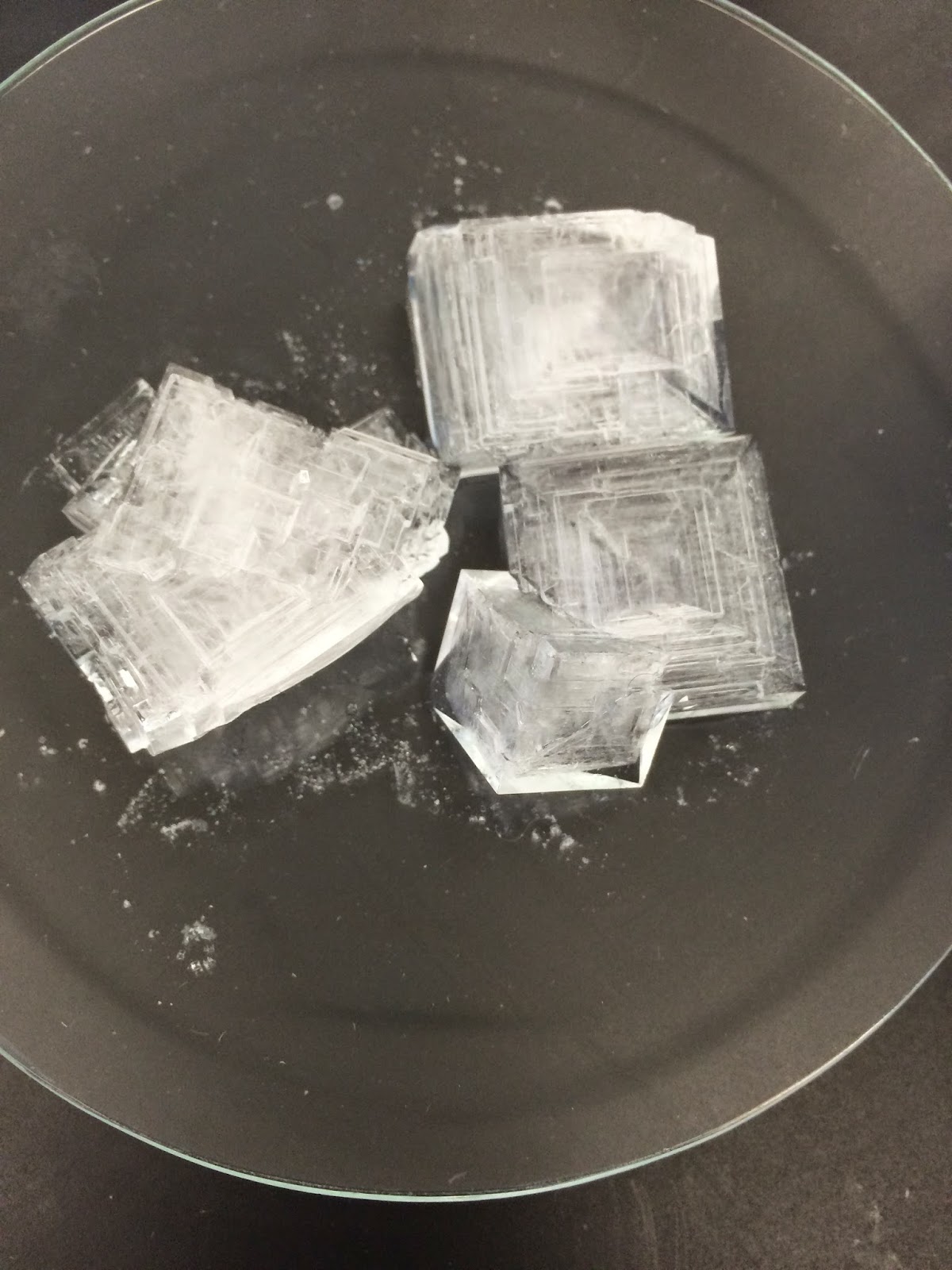Chemical #1: Cupric Sulfate
The characteristic blue of this copper really had me excited as it would have been interesting to see a large blue crystal. The majority of the crystallization occurred at at the bottom of the beaker instead of the hanging crystal seed, so it didn't turn out as large as ED, RQ, and SC had hoped.
Picture 1: Crystallization occurring on hanging seed crystal with simultaneous crystals growing along bottom of beaker.
Picture 2: Crystallization happening on bottom - due to impurities at the bottom of beaker
Chemical #2: Sodium Chlorate
The cubic structure of sodium chlorate was really evident in this jar. As you can see in the pictures below, the layers of cubic sodium chlorate that accumulated on top of one another was absolutely breathtaking.
Picture 3: Crystallization occurring on seed crystal as well as some impurities at bottom of jar. If you look really closely, you can see the crystals growing on the nylon string near the top of the beaker.
Picture 4: ED, RQ, and SC decided to make multiple crystals and were able to grow multiple in different jars. Of particular interest are the two cubes that have joined together.
Picture 5: ED happy with his baby crystals. One is named Jerry, the other is a John Doe.
That's a picture of a proud father, right there.
Chemical #3: Chromium Alum
Unfortunately, this beautiful black crystal suffered the same fate as the cupric sulfate.
Picture 6: Crystallization at the bottom of beaker. =(
Picture 7: OH and MA were able to crack some crystals from the bottom.
Picture 8: Some of the larger crystals that were extracted.
Picture 9: My favourite crystal. You can see its shape is almost perfectly octahedron. The math teacher in me is quite pleased at the almost perfect symmetry of this crystal.
Picture 10: OH and MA with their chromium alum octahedron crystals.
Picture 11: The rest of the class' sugar and salt crystals in a contest.
I look forward to reading their reports that will maybe offer some reasons as to why certain crystals were able to grow well and others not so well. Their recommendations in improvements to the procedure will be especially interesting, and I'm considering passing on their observations on to the next group next year to enlarge the crystals.











No comments:
Post a Comment